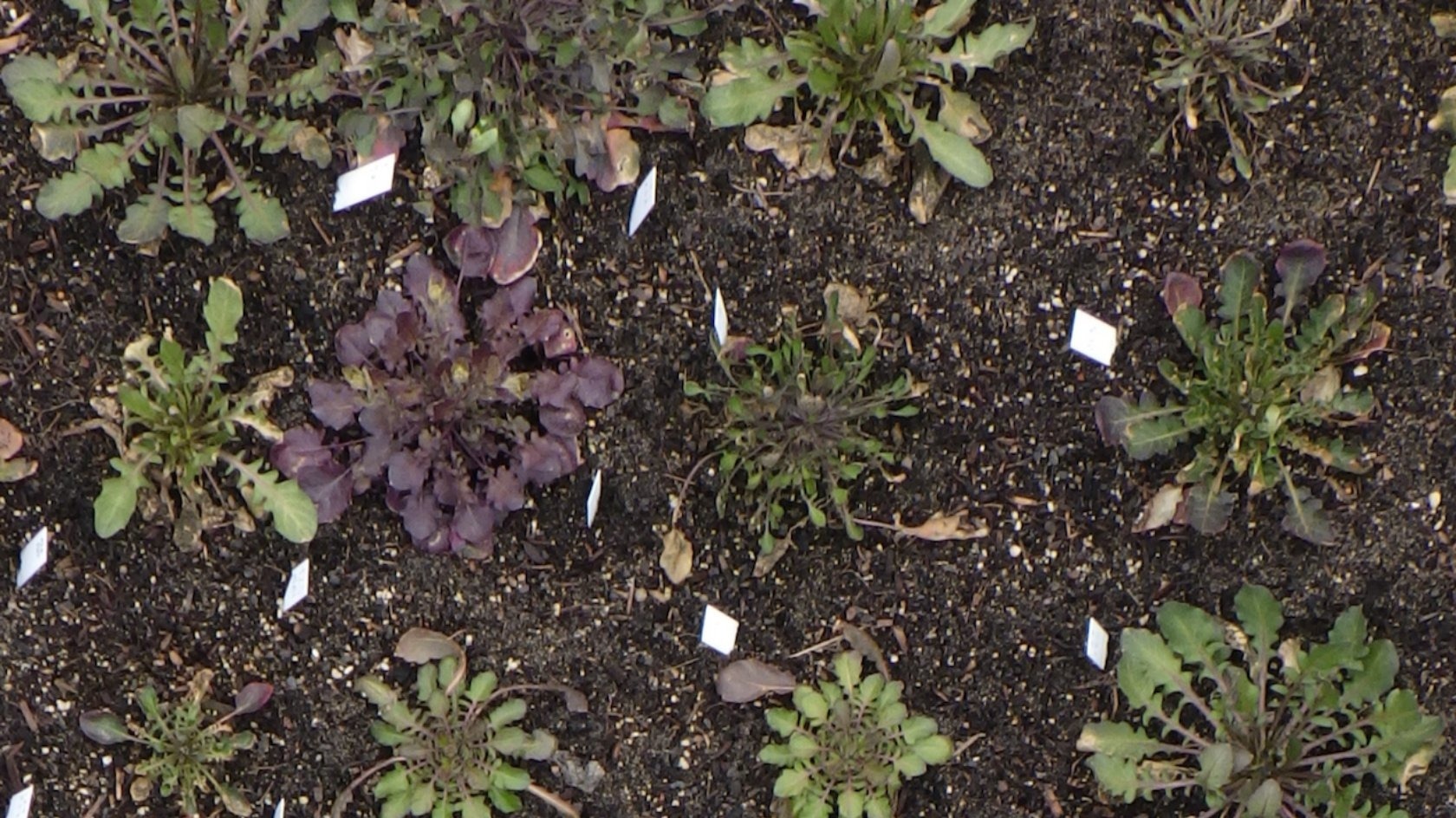
Arabidopsis plants on the experimental plots of UZH’s Irchel Campus displaying red pigmentation. Image Credit: University of Zurich
Climate change is making it easier to understand how plants can survive and thrive in changing surroundings. Conventional experiments performed in the laboratory have shown that plants house pigments in reaction to environmental factors. So far, such measurements were done by taking samples, which needed a part of the plant to be removed and thus damaged.
This labor-intensive method isn’t viable when thousands or millions of samples are needed. Moreover, taking repeated samples damages the plants, which in turn affects observations of how plants respond to environmental factors. There hasn’t been a suitable method for the long-term observation of individual plants within an ecosystem.
Reiko Akiyama, Study First Author, University of Zurich
With the assistance of UZH’s University Research Priority Program (URPP) “Evolution in Action”, a research group has currently developed a technique that allows researchers to note plants in nature with great accuracy. PlantServation is a technique that integrates strong image-acquisition hardware and deep learning-based software to examine field images, and it works in any type of weather.
Millions of Images Support Evolutionary Hypothesis of Robustness
With the help of PlantServation, the scientists gathered (top-view) images of Arabidopsis plants on the experimental plots of UZH’s Irchel Campus throughout three field seasons (lasting over five months from fall to spring) and further examined the more than four million images using machine learning.
The species-specific accumulation of a plant pigment known as “anthocyanin” was recorded by the data as a response to annual and seasonal fluctuations in light intensity, temperature, and precipitation.
Also, PlantServation allowed the researchers to experimentally replicate what takes place following the natural speciation of a hybrid polyploid species. Such species source from a duplication of the complete genome of their ancestors, a common type of species diversification in plants. Several wild and cultivated plants like wheat and coffee originated in this method.
In the present study performed, the presence of anthocyanin content of the hybrid polyploid species A. kamchatica resembled that of its two ancestors: from fall to winter, its anthocyanin content was similar to that of the ancestor species originating from a warm region, and from winter to spring it resembled the other species from a colder region.
The results of the study thus confirm that these hybrid polyploids combine the environmental responses of their progenitors, which supports a long-standing hypothesis about the evolution of polyploids.
Rie Shimizu-Inatsugi, Study Corresponding Author, University of Zurich
From Irchel Campus to Far-Flung Regions
PlantServation was created in the experimental garden located at UZH’s Irchel Campus.
It was crucial for us to be able to use the garden on Irchel Campus to develop PlantServation’s hardware and software, but its application goes even further: when combined with solar power, its hardware can be used even in remote sites.
Kentaro Shimizu, Study Corresponding Author and Co-Director, University Research Priority Program Evolution in Action, University of Zurich
Shimizu added, “With its economical and robust hardware and open-source software, PlantServation paves the way for many more future biodiversity studies that use AI to investigate plants other than Arabidopsis – from crops such as wheat to wild plants that play a key role for the environment.”